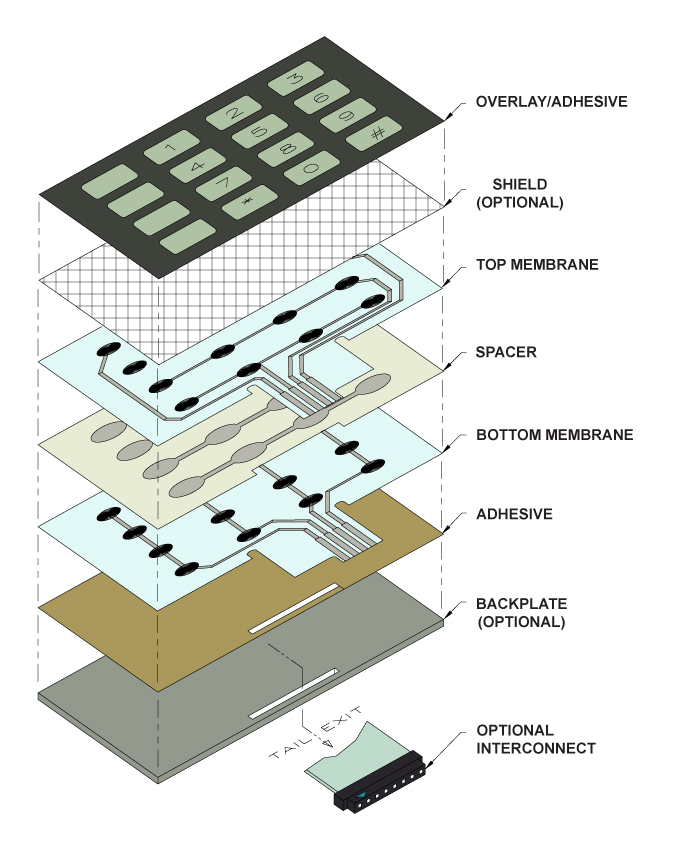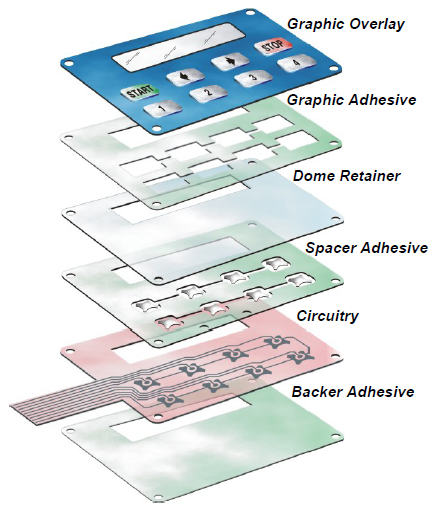Just How Membrane Layer Switches Enhance User Experience in Tools
Membrane buttons play a critical duty in enhancing individual experience throughout numerous devices by integrating instinctive style principles and effective tactile responses devices. As markets increasingly look for remedies that combine durability with user-centric design, the implications of membrane layer changes warrant further expedition to fully appreciate their effect on contemporary innovation.
Improved Tactile Feedback
Enhanced tactile responses in membrane switches over substantially boosts user experience by offering clear, responsive interactions. This feedback is essential in applications where accuracy and individual self-confidence are critical, such as clinical gadgets and industrial controls. By integrating functions such as tactile domes or elevated components, membrane switches over permit users to feel an unique action upon activation, therefore lowering the chance of accidental inputs.
The assimilation of responsive comments offers to bridge the void in between the physical and electronic realms, offering customers a calming verification of their activities. This communication not just cultivates a feeling of control but likewise reduces the cognitive load, as individuals can rely upon their feeling of touch to navigate via different features. Improved tactile comments can cause boosted efficiency, as operators can implement commands swiftly without needing to aesthetically confirm each action.

In addition, the reliability of tactile comments in membrane layer switches over contributes to total product functionality. When customers can without effort engage with a gadget, it cultivates a more favorable communication, bring about greater contentment and loyalty. Hence, the implementation of boosted tactile feedback is an important factor to consider for developers aiming to boost the user experience within their items.
Enhanced Appearances and Layout
Aesthetic allure plays an essential role in the functionality and marketability of membrane layer buttons. These buttons supply a smooth combination of form and feature, allowing producers to create visually striking user interfaces that improve user involvement. With personalized layouts, colors, and appearances, membrane buttons can be customized to straighten with brand identity and product aesthetics, making them an eye-catching choice for various applications.

Furthermore, using top notch materials and printing strategies makes sure that the aesthetic aspects continue to be lively and intact over time, reinforcing the total quality of the gadget. By focusing on looks in membrane layer button style, producers can dramatically improve the customer experience, fostering a positive psychological link between the individual and the device while advertising brand commitment.
Boosted Longevity and Long Life
Past their aesthetic allure, membrane layer buttons are recognized for their boosted sturdiness and longevity, making them a sensible option for a vast array of applications. Built from durable materials such as polyester or polycarbonate, these buttons can endure extreme environmental problems, including exposure to moisture, dirt, and chemicals. This strength is important for tools made use of in commercial, clinical, and exterior settings, where devices is usually subject to extensive usage.
Membrane layer buttons are additionally much less vulnerable to mechanical failing compared to standard mechanical switches. The lack of moving components minimizes the possibility of wear and tear, thereby prolonging the operational life expectancy of the device. Furthermore, their secured layout prevents contaminants from going into the switch, better improving reliability.

Simplified Individual Communication
3 key elements add to the simplified individual interaction offered by membrane layer buttons: intuitive design, tactile feedback, wikipedia reference and customizable designs. The user-friendly style of membrane switches allows individuals to swiftly recognize and browse the user interface without comprehensive training. This user-centric technique guarantees that controls are rationally prepared, facilitating simplicity of use and minimizing the cognitive load on customers.

In addition, personalized formats allow makers to customize the user interface to details applications and customer needs. By permitting the assimilation of individualized icons, shades, and switch plans, membrane buttons can be designed to match the needs of varied customer demographics, boosting functionality and ease of access. Jointly, these aspects contribute to a streamlined interaction experience, making membrane layer changes a preferred selection for tools focused on improving customer contentment and functional performance.
Versatile Applications Throughout Industries
The advantages of membrane layer changes extend past streamlined customer interaction, discovering applications throughout a wide variety of markets. In the health care field, they are utilized in clinical gadgets such as diagnostic tools and infusion pumps, where dependability and convenience of cleansing are extremely important. Membrane switches over offer a robust user interface that can stand up to the rigors of a clinical environment while guaranteeing easy to use operation.
In the customer electronic devices industry, these switches are widespread in home appliances, video gaming devices, and remotes, providing a smooth, i was reading this modern visual coupled with longevity. Their low-profile layout allows makers to create compact and fashionable gadgets without compromising capability.
Moreover, the automobile field uses membrane layer switches for dashboard controls and infotainment systems, boosting the individual experience by giving responsive responses and intuitive navigation. The industrial sector also advantages, with membrane layer changes included in machinery and control board, making certain efficient procedure in typically harsh conditions.
Inevitably, the convenience of membrane changes enables a variety of applications, boosting user experience across varied fields by incorporating functionality, durability, and design flexibility. As markets continue to develop, the demand for these cutting-edge user interfaces is likely to expand even better.
Conclusion
In final thought, membrane layer switches significantly boost user experience by supplying improved tactile responses, aesthetically pleasing designs, enhanced sturdiness, and simplified customer interaction. The mix of these qualities not only promotes intuitive involvement but likewise guarantees a trustworthy performance, making membrane layer switches an essential component in the growth of straightforward technology.